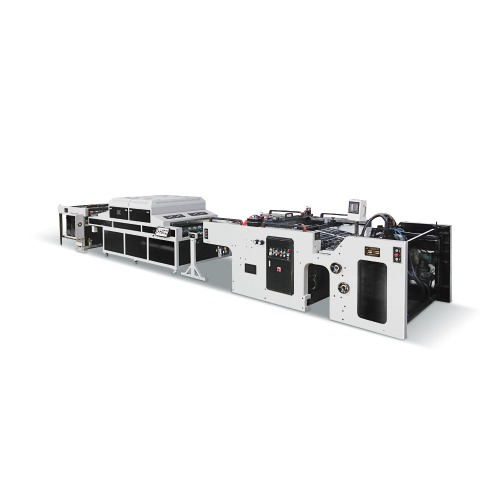- Home
- About Us
- Products
- Automatic Paper Embossing Machine
- Die Cutting Embossing Machine
- Foil Stamping Embossing Machine
- Screen Printing Machine
- Cardboard Laminating Machine
- Positioning Sheet Cutting Machine
- Hologram Laser Embossing Machine
- Screen Complete Printing Equipment
- H1000/H1500 Frame Making Machine
- 1100PM Plate Baking Machine
- EX1215/EX1518 Screen Exposure Machine
- MX1214/MX1518 Manual Screen Stretching Machine
- SFL-3F Compressed Air Dryer Machine
- EX1150 Vacuum Exposure Machine
- G1200 Manual Squeegee Grinding Machine
- E1300 Laser Engraving & Etching Machine
- UV3500R UV Dryer Machine
- Printing Material
- News Center
- Faq
- Contact Us
Web Menu
- Home
- About Us
- Products
- Automatic Paper Embossing Machine
- Die Cutting Embossing Machine
- Foil Stamping Embossing Machine
- Screen Printing Machine
- Cardboard Laminating Machine
- Positioning Sheet Cutting Machine
- Hologram Laser Embossing Machine
- Screen Complete Printing Equipment
- H1000/H1500 Frame Making Machine
- 1100PM Plate Baking Machine
- EX1215/EX1518 Screen Exposure Machine
- MX1214/MX1518 Manual Screen Stretching Machine
- SFL-3F Compressed Air Dryer Machine
- EX1150 Vacuum Exposure Machine
- G1200 Manual Squeegee Grinding Machine
- E1300 Laser Engraving & Etching Machine
- UV3500R UV Dryer Machine
- Printing Material
- News Center
- Faq
- Contact Us
Product Search
Exit Menu
How do modern screen printing machines ensure accurate registration of multiple colors during multi-color prints?
Ensuring accurate registration of multiple colors during multi-color prints is critical in screen printing to achieve precise alignment and high-quality output. Modern screen printing machines employ a combination of advanced technologies, mechanical precision, and automated systems to achieve this. Below is a detailed explanation of how these machines ensure accurate registration:
Mechanical Precision
Frame Alignment Systems: The screens used for each color are mounted on highly precise frames that can be adjusted with micrometer-level accuracy. This ensures that each screen aligns perfectly with the previous ones.
Registration Pins and Holes: Most screens have registration pins or holes that lock them into place on the machine, guaranteeing consistent alignment across all colors.
Magnetic or Vacuum Hold-Down Systems: These systems secure the substrate (e.g., fabric, paper, or plastic) in place during printing, preventing movement that could cause misalignment.
Automated Registration Systems
Vision Systems: Many modern machines use camera-based vision systems to detect and correct misalignments automatically. These systems capture images of registration marks (fiducials) printed on the substrate and compare them to digital templates. If any deviation is detected, the machine adjusts the position of the screen or substrate in real time.
Laser Alignment Tools: Some machines use lasers to project alignment guides onto the substrate, ensuring that each screen is positioned correctly before printing begins.
Software and Control Systems
PLC (Programmable Logic Controller): The PLC manages the entire printing process, including screen positioning, squeegee movement, and ink deposition. It ensures that all steps are executed with precise timing and accuracy.
Touchscreen Interfaces: Operators can input registration data and make adjustments via intuitive touchscreen interfaces, reducing the risk of human error.
Digital Pre-Press Tools: Before printing, software tools such as Adobe Illustrator or specialized pre-press software can generate accurate registration marks and simulate the final print, allowing for adjustments before the job starts.

Physical Adjustments
Micro-Adjustment Mechanisms: Modern machines often include fine-tuning mechanisms that allow operators to make minute adjustments to screen position manually if needed.
Substrate Tension Control: Proper tensioning of the substrate prevents stretching or shifting during the printing process, which could otherwise lead to misalignment.
Ink and Drying Techniques
Wet-on-Wet Printing: In some cases, wet-on-wet printing techniques are used to minimize the drying time between colors. This requires precise control over ink viscosity and flow to prevent smudging or bleeding.
UV Curing: UV-curable inks are often used in multi-color prints because they dry instantly under UV light, allowing for quick layering of colors without the risk of smearing or misalignment during subsequent passes.
Quality Control Measures
In-Line Inspection Systems: Advanced machines may include in-line inspection systems that continuously monitor the print quality and registration during production. If deviations are detected, the system alerts the operator or makes automatic corrections.
Test Prints and Proofing: Before starting a full production run, test prints are made to verify registration accuracy. Any issues are corrected before proceeding.
Operator Training and Experience
Training Programs: Operators are trained to recognize and address potential registration issues, such as substrate warping, screen stretching, or improper ink viscosity.
Best Practices: Experienced operators follow best practices, such as ensuring proper screen tension, using high-quality materials, and maintaining clean equipment, to minimize the risk of misalignment.
Hybrid Solutions
Digital Screen Printing: Some modern machines combine traditional screen printing with digital printing technologies. This hybrid approach allows for more precise registration by leveraging digital imaging and alignment tools.
of interest
Didn't Find A Product That Suits You?
Contact us for the latest news.
QUICK LINKS
PRODUCT CENTER
Contact Us
-

+86 13738772345
-

13738772345@163.com
-

+86-577-68100881
-

+86-577-68100882
-

No. 11 Haifeng Road, Longgang City, Wenzhou City, Zhejiang Province, China


 中文简体
中文简体 Español
Español











